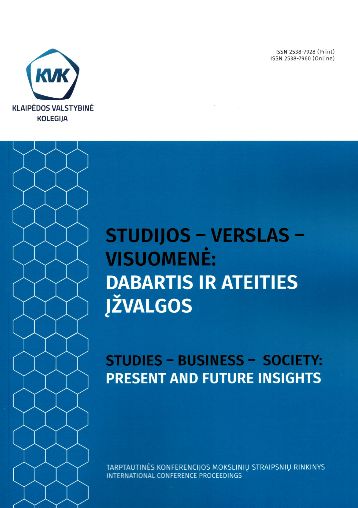UNDERSTANDING THE MEANING OF CHANGE IN THE LEARNING ENVIRONMENT: CHANGES IN TEACHERS' ACTIVITY IN CREATING LESSON CONTENT
DOI:
https://doi.org/10.52320/svv.v1iVII.243Keywords:
Learning environment, meanings of change, new learning strategies, changes in teachers' activities, lesson planning and contentAbstract
The study examines the dimension of the change in the learning environment and its implementation practice. In the conditions of a rapidly changing world, teachers are faced with new teaching/learning strategies. As changes in lesson planning become apparent, it is necessary to reflect and justify the guidelines for the teacher's professional activity. When searching for new teaching/learning strategies by way of conceptualization, it is especially important to have a good understanding of the implementation context of the open learning space, to adequately evaluate the content elements and to predict the possible features of their expression.
In the article, the changes in teachers' activities are analyzed with reflexive approaches. Teachers move to the logic of organizing the learning process, reveal new directions of expression: competency-based skills, knowledge and experience, activity strategies, lesson quality indicators. The aim of implementing changes is to put students at the center of learning, and learning is based on the development of competences. Competency-based education emphasizes the mastery of teachers as an important factor in the dynamics of the transformation of the learning environment. The analysis of theoretical sources suggests that teachers are the main actors in teaching learning strategies and creating a lesson in which there is a balance between teaching and learning. Therefore, the aim is to encourage teachers to develop didactic competences to create lesson descriptions enriched with learning strategies. A successful teacher tries to help students understand the learning goals, how to introduce the main idea and preliminary questions that stimulate thinking about the problem, how to express expectations, what is aimed and what is expected, what actions are necessary to achieve the quality of the lesson. It is recommended to plan and prepare an introduction to each new learning situation: to present in detail the nature of the activity, linking it to previous knowledge and indicating what effort is required to achieve the planned learning outcome. Students themselves can create a personalized learning process, apply different learning styles, methods and consider the purpose of the learning object. The aim of the new teacher's activity in the lesson is to create learning environments that provide students with different abilities and interests with appropriate learning, adapting to different learning content. It is the student's motivation, beliefs, will, and perseverance that encourage him to consciously explore new knowledge constructs, reflectively engage in self-directed learning cycles, and provide guidance to teachers on how to organize the assimilation of learning content, considering the students' readiness, knowledge level, and experience in applying learning strategies. In the changed learning environment, the teacher engages the students in the discussion during the task so that they are actively involved in the selection, use and evaluation of the strategic process of knowledge creation.
The results of the study show that teachers are aware of changes in the content of updated education, lesson quality indicators, intensively apply learning strategies of competence-based education to acquire knowledge. Qualitative content analysis revealed that teachers use cognitive management and affective strategies.
Downloads
Published
How to Cite
Issue
Section
License
Copyright (c) 2022 Sergejus Neifachas, Giedrė Slušnienė, Tomas Butvilas

This work is licensed under a Creative Commons Attribution 4.0 International License.
Individual articles are published Open Access under the Creative Commons Licence CC-BY 4.0, which permits unrestricted use, distribution, and reproduction in any medium, provided the original author and source are credited. Authors retain copyright in their articles, but grant Klaipėdos valstybinė kolegija the right of the first publication.

